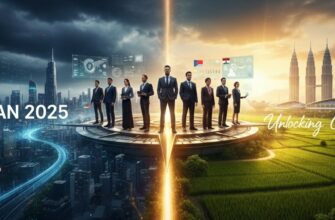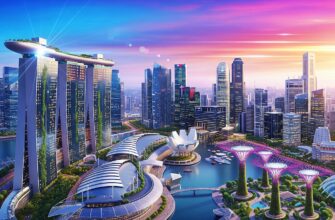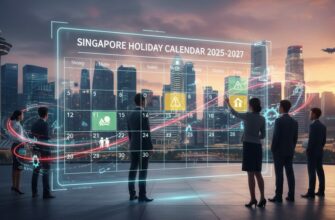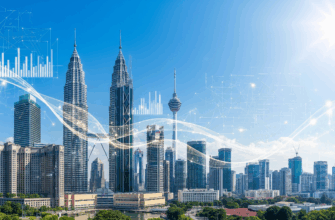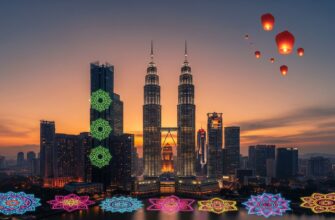For American boardrooms, the Philippines isn’t just another emerging market—it’s one of Southeast Asia’s fastest-growing economies and America’s oldest ally in the region. The country sits at the intersection of three seismic global trends: the realignment of the semiconductor supply chain, the U.S.-China rivalry, and the global clean energy transition. However, an increasingly fractured domestic political scene presents both unique opportunities and significant risks that demand a sophisticated approach from investors.
The Political Chessboard: Understanding the Players
The “UniTeam” alliance, which brought President Ferdinand “Bongbong” Marcos Jr. and Vice President Sara Duterte to power in 2022, is showing deep fractures. This isn’t a split over ideology but a collision of powerful family interests and competing visions for the country’s economic future.
- The Marcos Camp: Led by the President and his cousin, House Speaker Martin Romualdez, this faction represents the traditional, internationally-oriented elite. Their agenda is built on economic liberalization, attracting foreign direct investment (FDI), and launching massive infrastructure projects. Key wins include the CREATE MORE Act, which cut corporate taxes and expanded investment incentives, and the landmark decision to open the renewable energy sector to 100% foreign ownership. The administration is aggressively courting semiconductor giants, vowing to train 120,000 engineers by 2028 to build out the talent pipeline.
- The Duterte Faction: Anchored by Vice President Sara Duterte and her father, former President Rodrigo Duterte, this camp skews populist and protectionist. Drawing strong support from their base in Mindanao, they advocate for protecting local industries, tightening scrutiny of multinational corporations, and questioning trade deals they see as unfavorable to Filipino workers.
The ongoing International Criminal Court (ICC) investigation into former President Duterte’s “war on drugs” has not diminished his family’s political capital; if anything, it has galvanized their base.
Economic Fundamentals: Surprisingly Resilient
Despite the political noise, the Philippine economy keeps firing on all cylinders. Institutions like the World Bank, IMF, and Asian Development Bank forecast GDP growth to hold steady at a robust 6%, outpacing most of its regional peers.
What’s Driving the Growth?
- Consumer Power: Remittances from millions of Filipinos working abroad hit a record $38.3 billion in 2024, fueling a consumer-driven economy where domestic spending accounts for 70% of GDP.
- Tamed Inflation: After spiking in 2023, inflation has cooled significantly, allowing the central bank (Bangko Sentral ng Pilipinas) to maintain business-friendly monetary policies.
- Fiscal Discipline: The government is committed to trimming its budget deficit, and public debt remains manageable, secured by investment-grade sovereign credit ratings.
- Infrastructure Boom: The “Build Better More” program is a $170 billion pipeline of 186 projects, creating a massive opportunity for the engineering, construction, and logistics sectors.
The Business Impact: Where Politics Meets the Bottom Line
American companies must understand how this political dynamic translates into tangible business risks.
- Legislative Headwinds: The friction between the Marcos and Duterte camps could stall new economic reforms. While established laws like CREATE MORE are secure, future pro-investment legislation may face a tough road.
- The Elephant in the Boardroom: Corruption: Corruption remains a critical business risk. According to Transparency International, the Philippines continues to struggle with governance issues. For American firms, this means factoring in potential project delays, opaque bidding processes, and the reputational and legal risks associated with the Foreign Corrupt Practices Act (FCPA). Robust due diligence is non-negotiable.
- The Geopolitical Tightrope: The Philippines is walking a fine line between its top export market (the U.S.) and its largest import source (China). The Marcos administration has taken a stronger stance in the South China Sea and deepened its defense ties with Washington, creating opportunities for U.S. defense contractors but also raising the risk of economic retaliation from Beijing.
Sector-Specific Opportunities: Where the Smart Money Is Going
- Semiconductors & Electronics: The Philippines already commands 10% of the global semiconductor assembly and testing market. With government backing and a growing talent pool, it is perfectly positioned to capture new investment from American firms de-risking their supply chains from China.
- Business Process Outsourcing (BPO) 2.0: The nation’s powerhouse BPO industry is moving up the value chain from call centers to high-skill services like IT support, healthcare information management, financial analysis, and legal process outsourcing. Its English-proficient workforce and cultural affinity with the U.S. remain unmatched advantages.
- Renewable Energy: With a goal of 50% renewable energy by 2040 and a sector now fully open to foreign ownership, the Philippines is seeing a gold rush in solar, wind, and geothermal projects.
- Infrastructure & Construction: The “Build Better More” initiative, combined with recent laws allowing 100% foreign ownership of critical infrastructure like airports and railways, opens the door for American firms to participate in public-private partnerships (PPPs).
The Playbook: Recommendations for American Companies
- Diversify Political Relationships: In this fluid environment, relying on a single political contact is a losing strategy. Build a broad network of relationships across different branches and levels of government.
- Double Down on Compliance: In a market with high corruption risk, a rock-solid compliance program is not a cost center—it’s a competitive advantage that builds trust and resilience.
- Leverage Existing Incentives: The benefits under the CREATE MORE Act are on the books now. Move aggressively to lock in these incentives rather than waiting for future reforms that may never materialize.
- Invest in Your People: The Philippines’ demographic dividend is real, but it requires investment. Partner with local universities and launch in-house training programs to build the skilled workforce you need to win.
- Adopt a Long-Term View: The current political realignment will take years to settle. Companies chasing quick wins will get burned by volatility. Success belongs to those who invest for the 5-10 year horizon.
The Bottom Line
The Philippines presents a compelling, if complex, investment case. The economic fundamentals are strong, the workforce is young and capable, and its strategic importance is undeniable. However, the political risks are real and require clear-eyed assessment.
This is not a market for the faint of heart. But for sophisticated American companies that do their homework, prioritize governance, and commit for the long haul, the opportunities are substantial. In the Philippines today, complexity itself is creating the most interesting openings for savvy investors.

